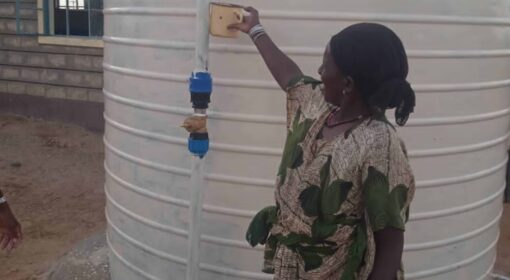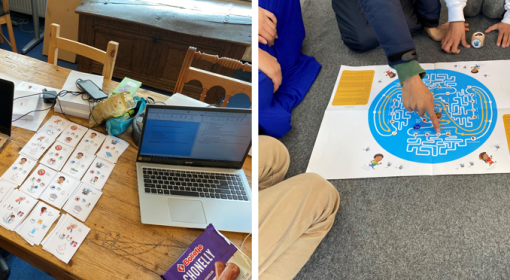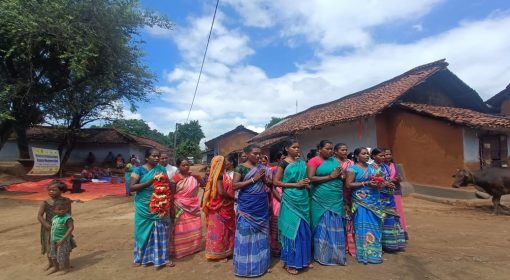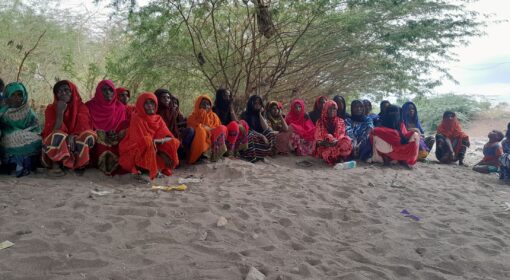by Ahmed Adalbagi and Ali M.A. Elhaj
March 10, 2020
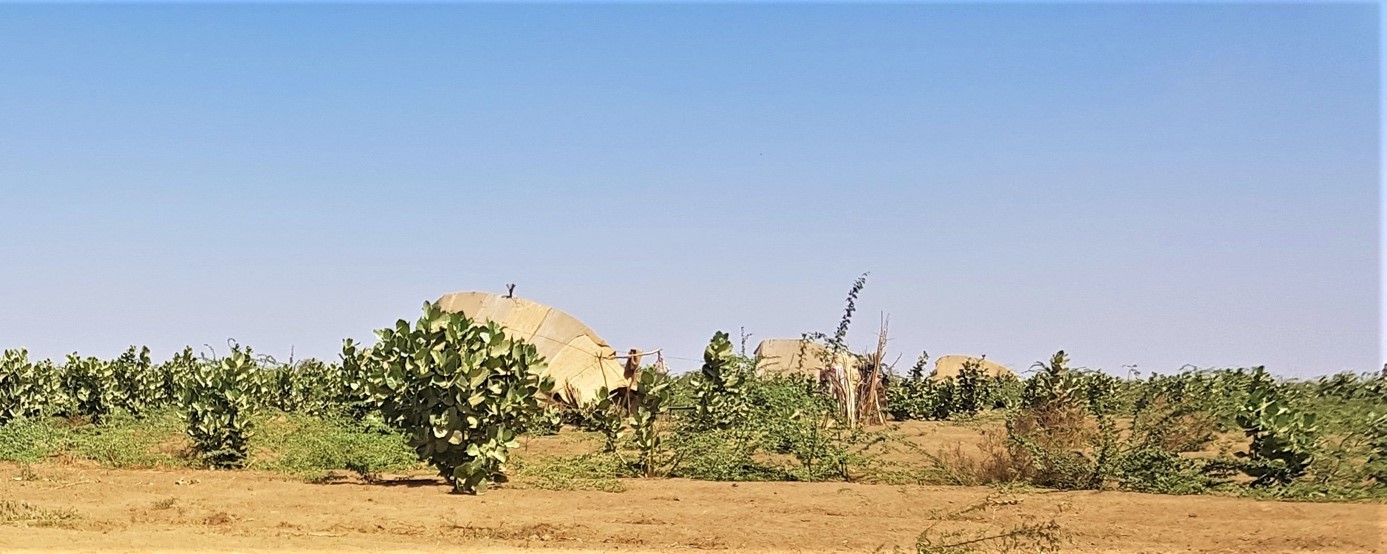
They are an ancient people, mentioned in Roman scriptures and Axumite documents. The Beja have been living in the land between the Nile and the Red Sea for centuries. An important Beja community is located in eastern Sudan at Gash basin in Kassala State. Here water comes through floods from the Gash River, diverted to long strips of land. The population here consists of an estimated 87,000 households, living in small rural small settlements. The main group consists of semi-nomadic pastoralists who rely on agriculture as a secondary activity to provide staple grain for family subsistence. The Beja nomads live in portable tents that are put up and dismantled by the women. The tents are curved in shape and are made of woven palm fronds. The more settled members live in mud-walled houses.
With the Beja all revolves around livestock. The Beja view of the “good life” is to have a large herd and to live in a green, well-watered pasture. The daily diet consists of camel’s milk, beef, and some grain. Traditionally Beja wore animal skin clothes. Today, however, they wear manufactured clothing. Gradually the cash economy has made ingress. They are dependent on cash to purchase clothes and other desired goods.
The lives of men and women are largely separate. During the day the men stay with the cattle in the livestock camps – sharing coffees and discussing. During this time, woman stay in the settlement, often making big palm mats. Women gather together in one tent to help one another, the hostess providing food in exchange for the help received. Gathering together give women the opportunity to address all issues they want to share together. It is only in the evening that men and women unite.
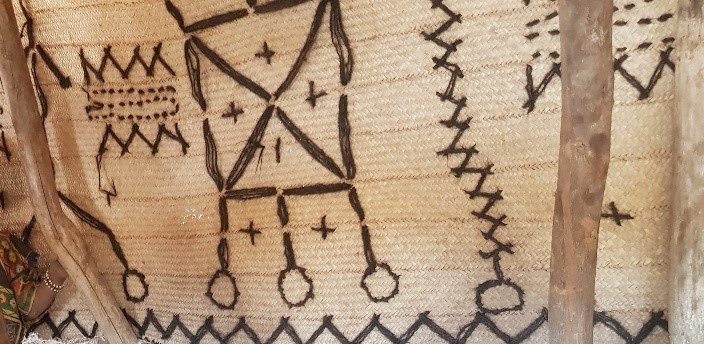
Compared to other rural communities, the Beja woman are relatively invisible. Most of their activities are inside the tents of the settlements. A main occupation is the making mats from palm fronts and straws and decorating these with goat hair. The mats are made for own use and for the market. They also make the typical supersized beds – big enough to hold 10 persons. The women weave the beds with ropes made out of cow’s’ leather and palm’s stems. The men in the family sell these products at the market. With the money women earn in this way, they often buy fruits and vegetables for their children.
For most illnesses Beja women will use traditional medicine from a variety of plants. The largest worry is of children getting sick with diarrhoea and vomiting. In this case they prepare rehydration solutions mixing water, salt and sugar. For infections they use the seed from the Acacia Nilotica (see inset) mixing it with water and letting it rest for three hour before they drink the water. If the children still don’t get better, they are taken to the hospital.
 | Qarad The Qarad (acacia nilotica) is a common shrub in East Sudan. The green leaves are famous for many medical and therapeutic uses. They are considered a natural antibiotic effective for the immune system, the blood and respiratory system. The Qarad has large historical and cultural value. Haboba (grandmothers) testify that inhaling it keeps them in excellent health. The saying goes: “Chew Qarad and hold into him”. Qarad is also processed into medicines and drugs. |
Water
Water is provided by Kassala Municipality by pipe line and stored in a big tank in the settlements close to where the men and the livestock spend the day. The water for the woman settlements is transported by jerry can. Even though water is an important amenity, people suffer from hepatitis, due to lack of good hygiene and latrines. Also unsanitary water storage (water is kept in jerrycans for long time) is a cause of this.
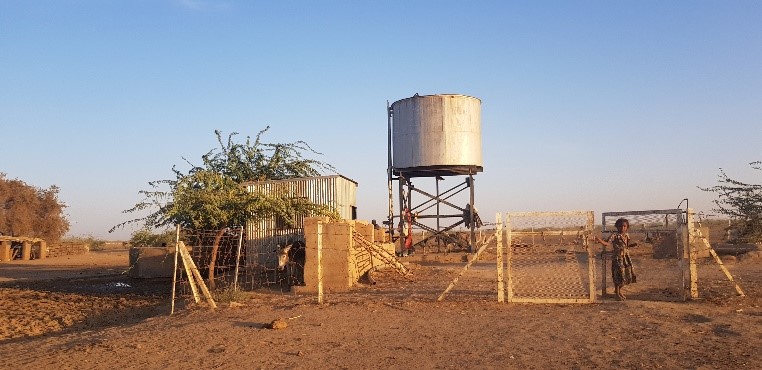
Food processing is done by hand – it is immensely time consuming. Preparing the flour out of sorghum seeds need 4 hours to prepare 8 kgs of flour. Also dairy products like butter and yoghurt are made by manual churning.
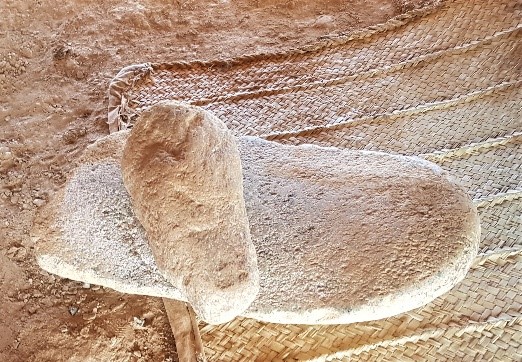
Children go to primary school in a nearby village, about 20 minutes by foot. Few of them go to high school and girls’ access to higher education is far more limited than boys. Families are very conservative: girls and boys are not to study in the same high school class room. For the Beja the school is not a big priority: the most essential knowledge is passed from grandparents to parents and to the children. This traditional knowledge is based on gender: boys will learn how to take good care of cattle, agriculture, water, markets, belief, and traditions. Girls will learn household activities, medicine plants, processing of dairy and grains, the tent, handicraft, decoration of hair, and their part of traditions.
Little seems to have changed in the life of Beja women – with the exception of the access to primary school education for girls and the hauling of improved domestic water from water points by men. How to improve the life and well-being of the women and communities? There are many opportunities that can create a good impact on the life and well-being of the woman and their children.
Here are some possibilities in which Beja women were very interested that can make a big difference in their lives
- Have their own kitchen garden to cultivate their vegetables by themselves, instead of buying it from Kassala from time to time
- Have small mill flour engines with solar packs that they can run by themselves, instead of spending a lot of time using traditional methods
- Learning to collect honey from the omnipresent mesquite trees
- Awareness about WASH principles and sanitation o Being provided separate pit latrines

